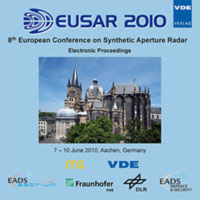Innovative Capabilities of the RADARSAT Constellation Mission
Konferenz: EUSAR 2010 - 8th European Conference on Synthetic Aperture Radar
07.06.2010 - 10.06.2010 in Aachen, Germany
Tagungsband: EUSAR 2010
Seiten: 3Sprache: EnglischTyp: PDF
Persönliche VDE-Mitglieder erhalten auf diesen Artikel 10% Rabatt
Autoren:
Thompson, Alan A. (MacDonald-Dettwiler and Associates, 13800 Commerce Parkway, Richmond, B.C., V6V 2J3 Canada)
Inhalt:
The RADARSAT Constellation Mission (RCM) is a Canadian SAR mission consisting of three C-band SAR satellites. RCM is currently being designed by a Canadian industrial team led by MacDonald-Dettwiler and Associates (MDA) under contract to the Canadian Space Agency. The emphasis of this paper is on providing a description of those capabilities of RCM that are unique or innovative. These unique or innovative capabilities include a constellation optimized for coherent change detection (CCD), a compact polarimetry mode, special imaging modes optimized for ship detection, and capabilities to support ocean current and ocean wind estimation. To support CCD, the system design includes maintaining the satellites in a narrow orbital tube, a tight requirement on azimuth antenna pointing control, and ScanSAR burst timing calculated from on-orbit spacecraft location data. For compact polarimetry, a capability to transmit circular polarization and receive H and V simultaneously is part of the design. For ship detection, innovative ScanSAR modes are used with a large number of beams and variable resolution and looks designed to optimize ship detection across a wide swath. In order to support ocean current and ocean wind estimation, a Doppler grid is included in the product meta-data.


